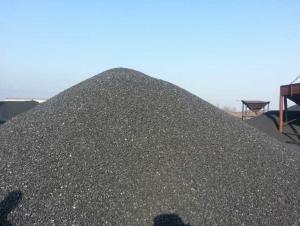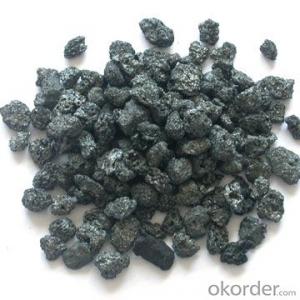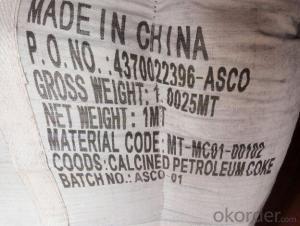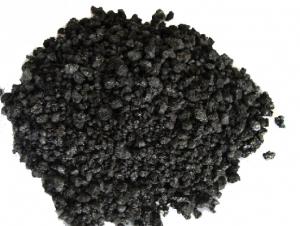Calcined Peroleum Coke with FC 98.5% S 0.5%
- Loading Port:
- Tianjin
- Payment Terms:
- TT OR LC
- Min Order Qty:
- 20 m.t.
- Supply Capability:
- 2000 m.t./month
OKorder Service Pledge
OKorder Financial Service
You Might Also Like
Packaging & Delivery
25kg/bag waterproof P.P bag or in MT jumbo bags, in addition of ton bag or pallet. Or supplied other packings which is propitious to customer's requirement.
Calcined Petroleum Coke is a critical ingredient in the production of Metallurgy and chemical industrial ,it can increase the used quantity of Scrap steel and reduce the quantity of Scrap iron, or use no Scrap iron at all, the calcined petroleum coke has follow properties: high absorptive character, no residue will be left and save production cost.
User : Calcined Petroleum Coke comes from delayed coke which extracted from oil refinery. Although Calcined Petroleum Coke contains a little bit higher level of sulfur and nitrogen than pitch coke, the price advantage still makes it widely used during steel-making and founding as a kind of carbon additive/carburant.
General Specification of Calcined Anthracite:
| FC % | 98.5 | 98.5 | 98.5 | 99 |
| ASH % | 0.8 | 0.8 | 0.8 | 0.5 |
| V.M. % | 0.7 | 0.7 | 0.7 | 0.5 |
| S % | 0.5 | 0.55 | 0.7 | 0.5 |
| MOISTURE % | 0.5 | 0.5 | 0.5 | 0.5 |
Picture of CPC/ Calcined Petroleum Coke
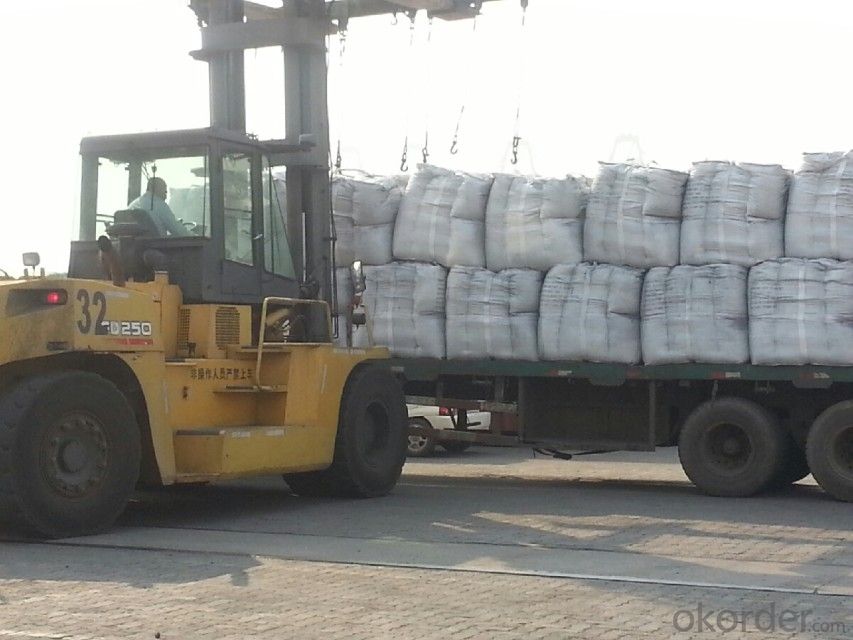
- Q: What is carbon neutral shipping?
- The concept of carbon neutral shipping involves offsetting or balancing the carbon emissions produced during the transportation of goods by sea, air, or land. Its goal is to minimize the environmental and climate impact of shipping. Shipping contributes to greenhouse gas emissions by burning fossil fuels, primarily heavy fuel oil in ships' engines. This releases carbon dioxide (CO2), nitrogen oxides (NOx), sulfur oxides (SOx), and particulate matter into the atmosphere, contributing to global warming and air pollution. To achieve carbon neutrality in shipping, different strategies can be used. One common approach is carbon offsetting, which involves investing in projects that remove or reduce an equivalent amount of CO2 from the atmosphere. This can include reforestation, renewable energy projects, or methane capture initiatives. By supporting these projects, shipping emissions are balanced out, resulting in a net-zero carbon footprint. Another way to achieve carbon neutrality is by using alternative fuels and energy-efficient technologies. Biofuels, hydrogen, and electric propulsion systems can significantly reduce or eliminate carbon emissions from ships. Optimizing shipping routes and vessel design can also reduce fuel consumption and emissions. Collaboration between shipping companies, governments, and international organizations is crucial to promote carbon neutral shipping. This includes setting industry-wide emission reduction targets, implementing stricter regulations, and providing incentives for sustainable practices. While carbon neutral shipping is a positive step towards addressing climate change, it should be seen as a transitional measure towards a fully decarbonized shipping sector. Continued research and development in clean technologies, along with the adoption of sustainable practices, are essential for long-term environmental sustainability in the shipping industry.
- Q: What are the consequences of increased carbon emissions on economic stability?
- Increased carbon emissions have significant consequences on economic stability. Firstly, the costs associated with climate change impacts such as extreme weather events, rising sea levels, and damage to infrastructure can burden economies, leading to increased expenditures for adaptation and recovery. Additionally, carbon-intensive industries may face regulatory measures and higher costs, impacting their competitiveness and potentially leading to job losses. The need for transitioning to cleaner energy sources and implementing carbon pricing mechanisms can also entail upfront investments and adjustment costs for businesses. Finally, the potential disruption of global supply chains due to climate-related events can disrupt trade and negatively impact economic stability. Overall, increased carbon emissions pose risks to economic stability by exacerbating climate change impacts and necessitating costly adjustments.
- Q: How does carbon impact the availability of clean transportation?
- Carbon impacts the availability of clean transportation through its contribution to greenhouse gas emissions. Carbon dioxide (CO2) is a major greenhouse gas responsible for climate change, and the burning of fossil fuels in traditional transportation systems releases significant amounts of CO2 into the atmosphere. This has led to the urgent need for cleaner alternatives in the transportation sector. Clean transportation options, such as electric vehicles (EVs) and hydrogen fuel cell vehicles, are designed to minimize carbon emissions. By utilizing electricity or hydrogen as the primary source of energy, these vehicles produce zero tailpipe emissions, significantly reducing the carbon footprint associated with transportation. However, the availability and adoption of these clean transportation solutions are directly impacted by carbon-related factors. One key factor is the energy infrastructure required to support clean transportation. Electric vehicles, for example, rely on charging stations and a reliable power grid. The production of clean electricity from renewable sources, such as solar and wind, is crucial to ensure that EVs are truly emission-free. Therefore, the carbon intensity of the electricity grid plays a vital role in determining the environmental impact of electric transportation. Furthermore, the availability of carbon-neutral fuels is another important aspect. Hydrogen fuel cell vehicles, which convert hydrogen into electricity to power the vehicle, require a readily available and sustainable source of hydrogen. Currently, most hydrogen is produced from natural gas, which generates CO2 emissions during the production process. However, advancements in technologies like electrolysis, which uses renewable electricity to split water into hydrogen and oxygen, are paving the way for carbon-free hydrogen production. Additionally, carbon pricing and policies also impact the availability of clean transportation. By putting a price on carbon emissions, governments and organizations incentivize the adoption of low-carbon transportation options. This can lead to increased investment in clean transportation infrastructure, research, and development, ultimately driving the availability and affordability of clean transportation solutions. In conclusion, carbon emissions from traditional transportation systems have necessitated the development and availability of clean transportation alternatives. Factors such as the energy infrastructure, availability of carbon-neutral fuels, and supportive policies all influence the availability and accessibility of clean transportation. By addressing carbon impacts, we can accelerate the transition to a more sustainable and environmentally-friendly transportation system.
- Q: Why can carbon fiber in addition to static electricity ah?
- The elimination of electricity is based on the leakage of charge. The carbon fiber has a weak corona discharge, so it combines the charge.
- Q: What is carbon nanoelectronics?
- Carbon nanoelectronics refers to the field of research and development that focuses on utilizing carbon-based materials, such as carbon nanotubes or graphene, for the creation and advancement of electronic devices and components on a nanoscale level. These nanoscale carbon structures possess unique electrical properties that make them highly desirable for applications in a wide range of electronic devices, including transistors, sensors, and interconnects. One of the key advantages of carbon nanoelectronics is the exceptional electrical conductivity and thermal properties of carbon nanomaterials. Carbon nanotubes, for instance, exhibit excellent electrical conductivity, comparable to copper, but with a much smaller footprint. This property allows for the creation of smaller and more efficient electronic devices, leading to advancements in areas such as miniaturization and energy efficiency. Another noteworthy aspect of carbon nanoelectronics is the immense strength and flexibility of carbon nanomaterials. Carbon-based structures like graphene possess exceptional mechanical properties, making them highly durable and resilient. This property enables the production of flexible and wearable electronic devices that can conform to various surfaces, opening up new possibilities for electronics design and integration. Additionally, carbon nanoelectronics offers the potential for high-speed and low-power electronic devices. The unique electronic properties of carbon nanomaterials, such as their ability to carry electric charge at an extremely high speed, make them suitable for high-frequency applications. Furthermore, the low power consumption of carbon nanomaterials can lead to the development of energy-efficient electronic devices. Overall, carbon nanoelectronics holds great promise for revolutionizing the field of electronics by enabling the creation of smaller, faster, and more energy-efficient devices. Continued research and development in this field are expected to lead to breakthroughs in various industries, including computing, telecommunications, healthcare, and energy.
- Q: What are the effects of carbon emissions on the stability of alpine ecosystems?
- The stability of alpine ecosystems is significantly and extensively affected by carbon emissions. Carbon emissions, mainly in the form of carbon dioxide, contribute to the greenhouse effect and subsequent climate change, thereby causing a series of impacts that directly influence the stability of alpine ecosystems. One of the most noticeable consequences is the rise in global temperatures. With increasing temperatures, glaciers and snow caps in alpine regions melt at accelerated rates. This has a profound impact on the availability of freshwater resources since alpine regions often serve as the origin of major rivers and lakes. Decreased water availability not only affects the survival of plant and animal species but also has consequences for human populations that rely on these water sources for agriculture, drinking water, and hydropower generation. Another result of carbon emissions is the alteration of precipitation patterns. Climate change disrupts the balance between rainfall and snowfall in alpine ecosystems, leading to more frequent and intense droughts or rainfall events. Such changes in precipitation patterns can result in soil erosion, landslides, and the overall instability of alpine terrain. This poses a threat to the survival of alpine flora and fauna, as well as the loss of crucial habitats and biodiversity. Furthermore, carbon emissions contribute to the acidification of alpine lakes and rivers. Increased carbon dioxide in the atmosphere dissolves in water bodies, forming carbonic acid. This acidification negatively affects aquatic organisms, such as fish and amphibians, impairing their reproductive abilities, altering their behavior, and even causing mortality. It also disrupts the delicate balance of alpine freshwater ecosystems, leading to a decrease in species diversity and ecological resilience. Lastly, carbon emissions can indirectly impact alpine ecosystems through the expansion of invasive species. Climate change creates favorable conditions for the migration of non-native plant and animal species to higher elevations. These invasive species can outcompete native flora and fauna, disrupt ecological interactions, and ultimately lead to the displacement or extinction of native species. This disrupts the natural balance of alpine ecosystems and compromises their stability. In conclusion, the stability of alpine ecosystems is profoundly affected by carbon emissions. These emissions contribute to the melting of glaciers, alteration of precipitation patterns, acidification of water bodies, and the spread of invasive species. These impacts disrupt the balance of alpine ecosystems, leading to the loss of biodiversity, degradation of habitats, and reduced availability of freshwater resources. Urgent action to mitigate carbon emissions is crucial to preserve the stability and functioning of these fragile ecosystems.
- Q: What is coal?
- Coal is a black or brownish-black sedimentary rock that is primarily composed of carbon, along with various other elements such as hydrogen, sulfur, oxygen, and nitrogen. It is formed from the remains of plants that lived and died millions of years ago, accumulating in swampy environments. Over time, the layers of plant material were subjected to high pressure and heat, resulting in the formation of coal. Coal is one of the most abundant fossil fuels on Earth and has been used as a source of energy for centuries. It is typically extracted from underground or surface mines and can be found in different forms, including anthracite, bituminous, sub-bituminous, and lignite, with varying carbon content and heating value. Due to its high carbon content, coal is primarily used for electricity generation and as a fuel for industrial processes. When burned, it releases energy in the form of heat, which is converted into electricity through steam turbines. However, burning coal also releases greenhouse gases and other pollutants, contributing to air pollution and climate change. In addition to its use as a fuel, coal is also used in the production of steel and cement, as well as in various industrial processes. It is a versatile resource that has played a significant role in the development of modern societies, but its environmental impact and finite nature have led to increased efforts to shift towards cleaner and more sustainable energy sources.
- Q: What are the impacts of carbon emissions on the stability of tundra ecosystems?
- Carbon emissions have significant impacts on the stability of tundra ecosystems. As carbon dioxide levels increase in the atmosphere due to human activities, such as burning fossil fuels, it leads to global warming. Tundra ecosystems are particularly vulnerable to this warming trend. The increase in temperature causes the permafrost to thaw, resulting in the release of large amounts of stored carbon into the atmosphere as methane, a potent greenhouse gas. This feedback loop intensifies climate change, further impacting the stability of tundra ecosystems. Additionally, the warmer conditions allow for the expansion of shrubs and trees into the tundra, altering the delicate balance of plant species and disrupting the habitat for specialized tundra organisms. Overall, carbon emissions contribute to the destabilization of tundra ecosystems, leading to changes in biodiversity, permafrost degradation, and potential release of more greenhouse gases, exacerbating climate change.
- Q: What does carbon burning mean?
- Put the burning carbon under the iron plate and make a copy of it on the iron plate, that is, carbon burning!
Send your message to us
Calcined Peroleum Coke with FC 98.5% S 0.5%
- Loading Port:
- Tianjin
- Payment Terms:
- TT OR LC
- Min Order Qty:
- 20 m.t.
- Supply Capability:
- 2000 m.t./month
OKorder Service Pledge
OKorder Financial Service
Similar products
Hot products
Hot Searches












